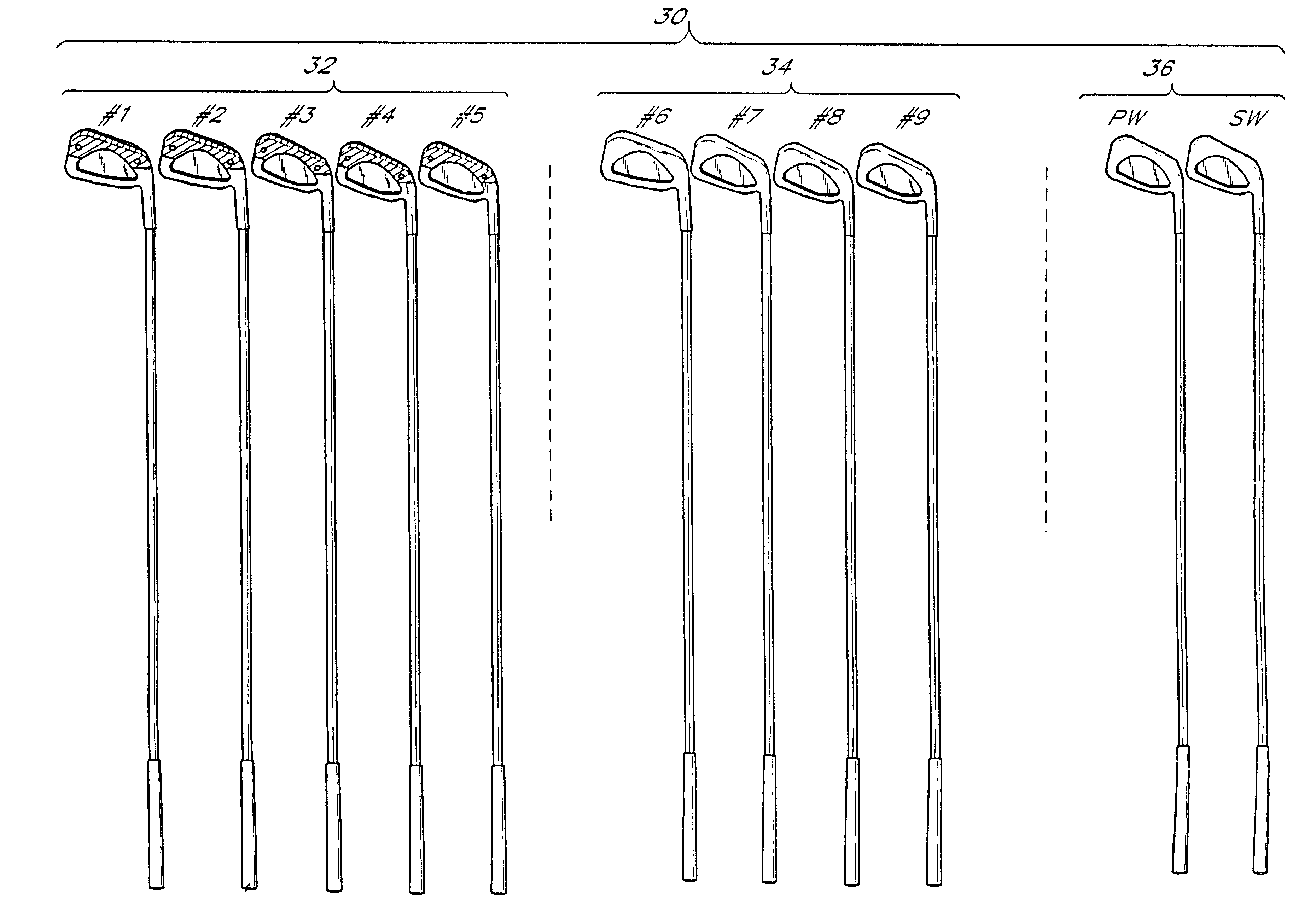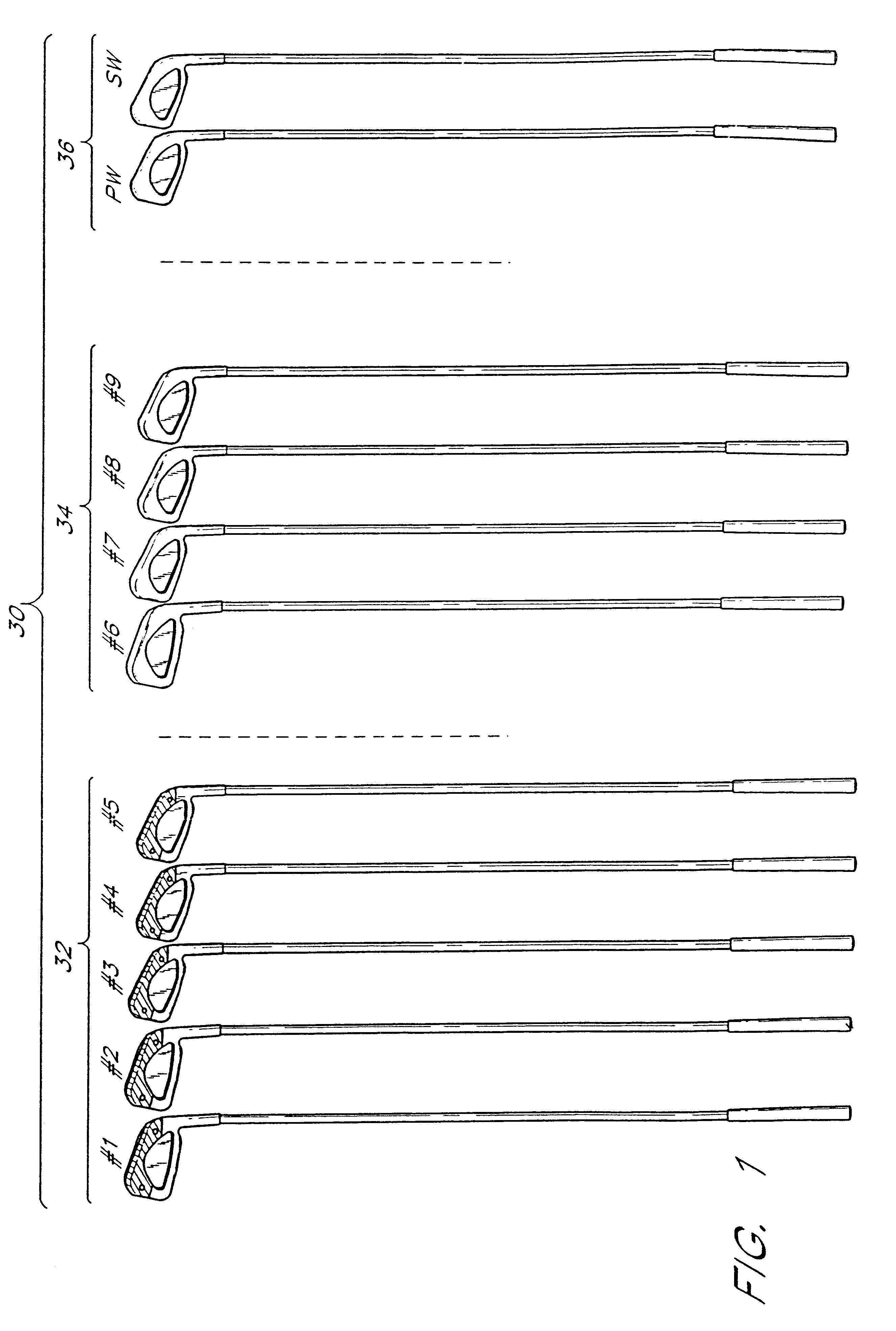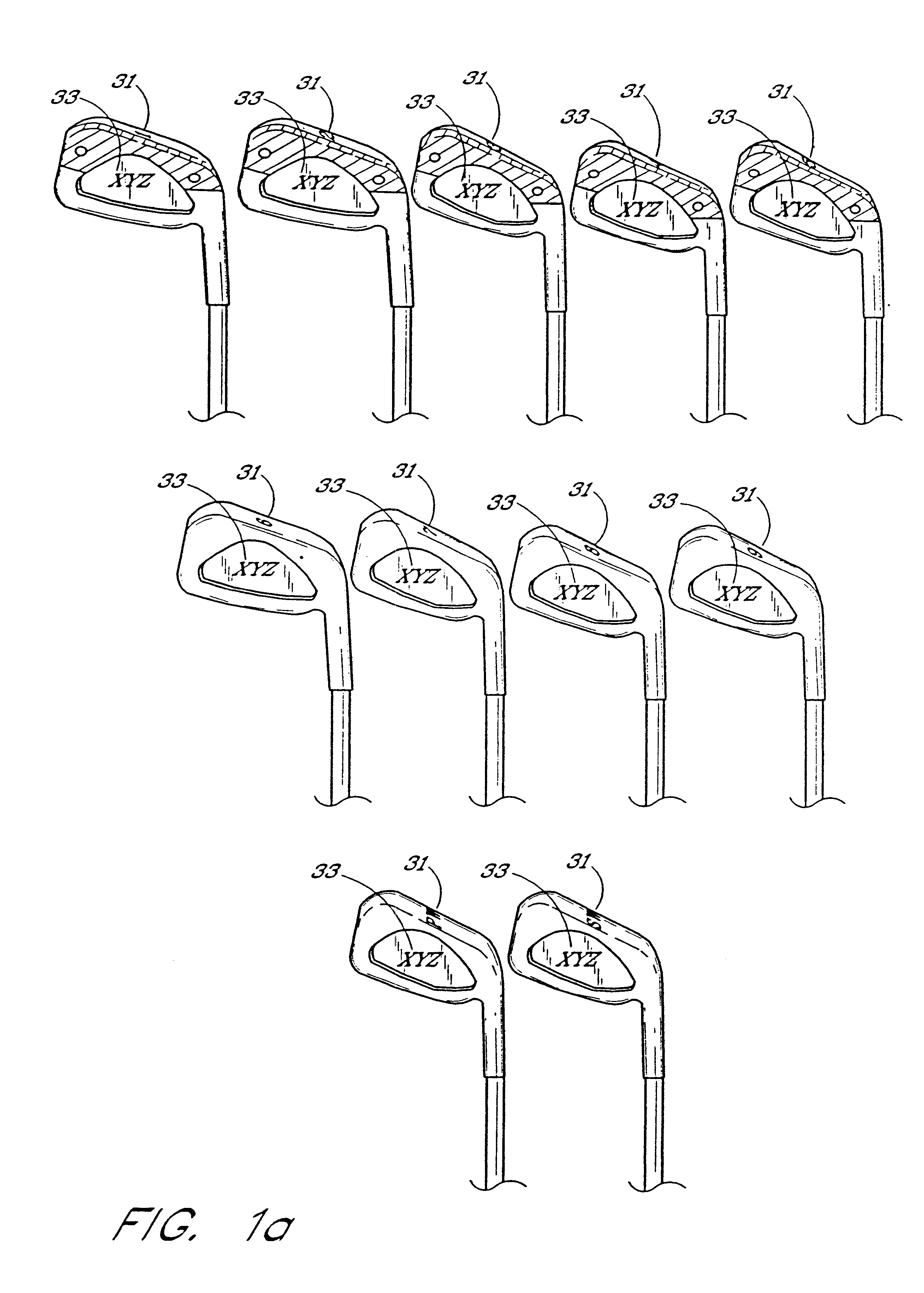Correlated set of golf clubs
a golf club and iron-type technology, applied in the field of golf clubs, can solve the problems of inability to coordinate the incremental difference in the shot distance between the clubs, the difficulty of playing, so as to increase the controllability of the ball, increase the size of the sweet spot, and increase the size of the strike surface
- Summary
- Abstract
- Description
- Claims
- Application Information
AI Technical Summary
Benefits of technology
Problems solved by technology
Method used
Image
Examples
Embodiment Construction
FIG. 1 shows a set 30 of iron-type golf club. The et 30 generally comprises a first group 32 of iron-type golf clubs, a second group 34 of iron-type golf clubs, and a third group 36 of iron-type golf clubs. Each golf club within a common group has structural properties that are selected to enhance the specific playing requirements of the type of club within the group, as described in more detail below. The structural properties of the clubs provide a unique trend in the vertical positions of the centers of gravity of the club heads in the set 30 wherein the vertical distance of the center of gravity to ground is smaller for the long irons than the medium or short irons, as described in more detail below.
In the embodiment shown in FIG. 1, the first group 32 preferably includes the long irons, such as, for example, the 1, 2, 3, 4 and 5 irons. The second group 34 preferably includes the middle or medium irons, such as, for example, the 6, 7, 8 and 9 irons. The third group 36 preferably...
PUM
 Login to View More
Login to View More Abstract
Description
Claims
Application Information
 Login to View More
Login to View More - R&D
- Intellectual Property
- Life Sciences
- Materials
- Tech Scout
- Unparalleled Data Quality
- Higher Quality Content
- 60% Fewer Hallucinations
Browse by: Latest US Patents, China's latest patents, Technical Efficacy Thesaurus, Application Domain, Technology Topic, Popular Technical Reports.
© 2025 PatSnap. All rights reserved.Legal|Privacy policy|Modern Slavery Act Transparency Statement|Sitemap|About US| Contact US: help@patsnap.com



